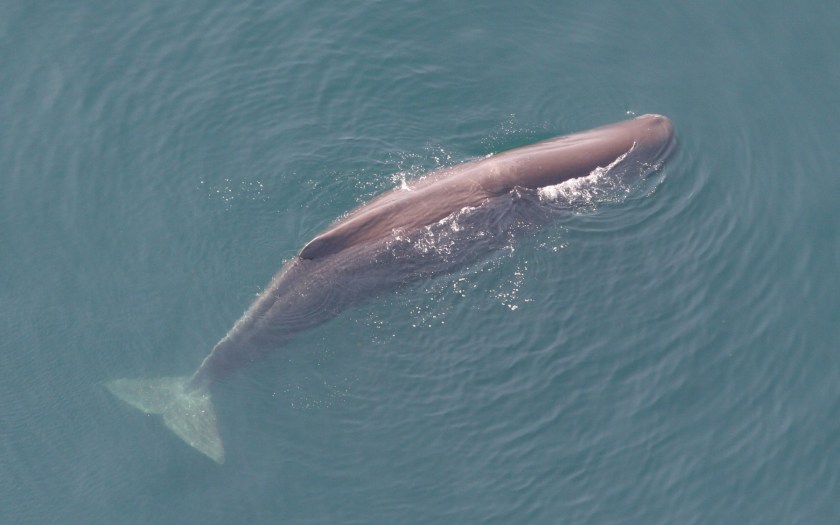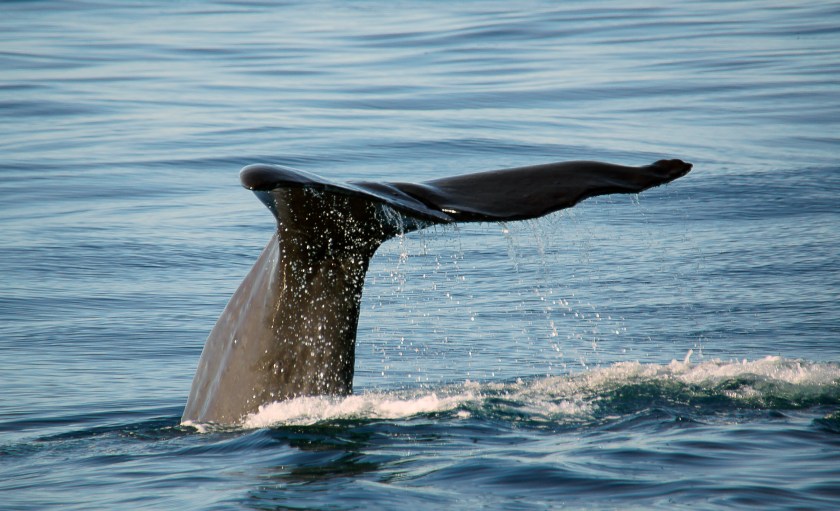Sperm whales are chatty.
Their language is markedly different from the deep cetacean moans associated with other whales, taking the form of Morse code-like clicks that boom through the ocean in a decibel range almost twice that of jet engines.
And while we’ve long known animals like monkeys assign specific meaning to short vocalizations varying from alarm calls to affirmations of social rank, sperm whale conversations can endure for an hour or more, with participants exchanging complex strings of clicks that vary depending on context, environment and even which pod family is speaking.

While artificial intelligence has been maligned over the past few years as people grapple with its rapid progress and potential for abuse, it remains the best tool we have for teasing out patterns that our human minds can’t discern, especially from large quantities of data.
With more than 9,000 recordings of sperm whales, Project CETI — Cetacean Translation Initiative, a non-profit effort to decode and translate sperm whale communication — had precisely the kind of huge data cache that AI excels at analyzing.
By feeding the recordings into specially trained machine learning algorithms, the research team was able to identify a wealth of new language patterns. While human languages are composed of quantized morphemes — prefixes, suffixes and root words — whale communication is broken down into sequences of clicks and pauses called “codas.”
Like Morse code, codas make a distinction between short clicks and long clicks. Sperm whales also vary the tempo of the clicks, which could represent inflection, “dialects” or concepts completely alien to the human mind.
“Some of what they’re doing might be totally different from our way of communicating and we’re probably never going to be able to fully grasp those differences,” Oregon State postdoctoral marine researcher Taylor Hersh told NPR.

Researchers believe the “inter-click intervals” — akin to ghost notes in music — may be as significant as the clicks themselves. Importantly, while human ears were able to identify and catalog some of the codas, the machine learning algorithms found many that human analysis missed.
That’s not surprising considering sperm whales — the loudest animals on Earth, capable of generating sounds up to 230 dB — took a much different evolutionary course and, as ocean-dwelling creatures weighing up to 90,000 pounds (40,800 kg) likely have a radically different sensorium compared to humans.
The comparisons to music go further than ghost notes.
“This study shows that coda types are not arbitrary, but rather that they form a newly discovered combinatorial coding system in which the musical concepts of rubato and ornamentation combine with two categorical, context-independent features known as rhythm and tempo, by analogy to musical terminology,” CETI’s team wrote on May 7 while unveiling the most recent study.

While people have used many abilities to mark the dividing line between humans and animals over the years — including the ability to use tools, experience emotions, and demonstrate self-awareness — human capacity for authentic language with syntax and context-dependent meaning was one of the stalwarts, standing the test of time as new research toppled the other dividers by showing animals do indeed use tools, experience rich emotions and have complex inner mental lives.
With this research, scientists are assembling a “sperm whale phonetic alphabet” that will make it easier to discern and catalog whale codas.
To be clear, there’s still a lot of work ahead before scientists can prove sperm whale codas are comparable to human definitions of language, but whether they strictly meet that definition may not matter. After all, it’s clear the clicks and pauses of whale codas are imbued with meaning, even if it remains elusive to us for the moment.
Indeed, “sperm whale communication has both contextual and combinatorial structure not previously observed in whale communication,” the team wrote.
Proving sperm whale codas are tantamount to human language isn’t the goal anyway. The team has two overriding priorities — decode the meanings behind the codas, and get the wider public invested in the fate of these endangered animals by showing they’re not so different from us.
“Our results show there is much more complexity than previously believed,” MIT AI lab director Daniela Rus told NPR, “and this is challenging the current state of the art or state of beliefs about the animal world.”


They are smarter than most politicia… Oops! I did not say that! Hi Little Bud and Big Bud! I love whales! And animals do talk to each other! Example: Cats! “Get your furry behind off of my property!!! I have claws you know!” ” Yo, dogs! Be gone!” 😂😎😹 ( me, Spunk, and Tim!)
LikeLiked by 2 people
I’m glad everyone’s cool with stories like this. I know it’s a cat blog but I’m really interested in animal cognition. Efforts to decode animal communications are fascinating, and machine learning makes it possible to do analysis we’d never be able to do by hand, so to speak.
LikeLiked by 1 person
So whales communicate with a language that’s evolved for their environment! Perhaps they come close to cats, the highest form of life evolution has ever produced; or the pinnacle of God’s creation (take your pick, choose only one).
Cosmo the Magnificent demands more articles like this. And commands AI to translate cat language so his servants will be smarter and more obedient. Google translate for cats, asap.
LikeLiked by 1 person
There’s an app called MeowTalk that’s supposed to translate your cat’s vocalizations. If you search “MeowTalk” on the search bar on this site (either on the bottom or on the right sidebar depending on whether you’re on mobile or desktop) I think I wrote at least two or three posts about it when it came out and in the months afterward, and they should show up.
MeowTalk uses machine learning as well, and the project lead was one of the developers of Amazon’s Alexa. At the time I found the “translations” more funny than useful, but with machine learning, the more data the algorithm has, the better it performs. So if a lot of people have used it in the intervening time, maybe it’s better at translating. I should give it a try again and see if it still thinks Bud is serenading me with declarations of his love.
LikeLiked by 1 person
Cosmo the Magnificent demands more articles like this. And commands AI to translate cat language so his servants will be smarter and more obedient. Google translate for cats, asap.
LikeLiked by 2 people